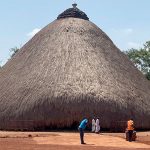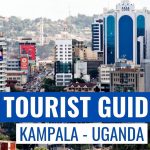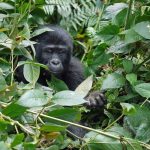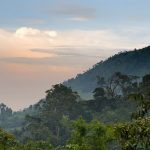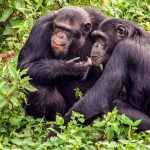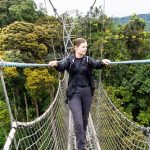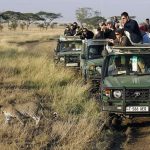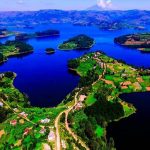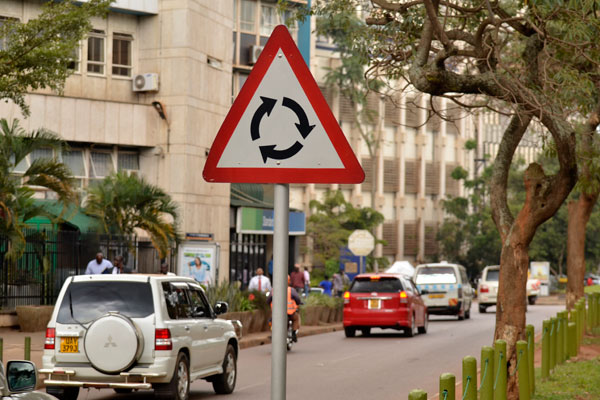Uganda – Home to Mountain Gorillas
The countryside of Uganda is a haven for a number of wildlife species that include mountain gorillas – the most endangered primate species on the planet and more. Today, mountain gorillas are among the attractive wildlife species in the pearl of Africa.
Mountain gorillas the largest of the apes’ species; they are covered with black fur and live in groups or families. They inhabit the forested mountains of southwestern Uganda (in Mgahinga National Park and Bwindi Impenetrable Forest). Hiking the forested mountains to encounter the mountain gorillas in their natural habitats offers great wildlife experiences especially because of an added advantage of viewing many other wildlife species in the national parks.
Any tourist heading to southwestern Uganda on a mountain gorilla safari is assured of at least viewing mountain gorillas as the feed or relaxes in their most preferred homes.
Planning a Gorilla Trek
Mountain Gorilla watching is one of Uganda’s biggest tourist attractions, attracting thousands of travelers across the world. These mountain gorillas are the bulkiest primates on earth and when you meet them, you will be amazed at how beautiful they look with those brown eyes and how caring and protective they are towards one another with their families, especially their little ones. There are over 700 of them living in the Bwindi Impenetrable National Park and in the Mgahinga Gorilla National Park, both in Uganda as well as in the Virunga Mountains of Rwanda, the only places you can visit to meet the mountain gorilla while in the wilderness.
A gorilla safari adventure can start from either of these countries depending on the program. In all parks Mgahinga, Bwindi or Virunga, there are the habituated mountain gorillas which means, they easily relate with people than the violate, habituated gorillas. These animals live in families and usually have a group leader who is also the dominant male and is often referred to as the silver back because of the silver lining that develops on its back as it ages.
The mountain gorilla Trekking Etiquette
This starts with acquiring a mountain gorilla-tracking permit sold at $600 in the peak tourist season and $450 during the low tourist season.
With a mountain gorilla permit, one is definitely assured of going to track in either Bwindi or Mgahinga Gorilla Park. On the day of tracking, tourists are expected to be at the national park headquarters for a briefing very early in the morning.
After the briefing, the tourists are then led to the jungle in search for mountain gorillas. This doesn’t require any hiking experiences however it’s always better to do when in good physical health since it might be a little hectic.
The hike through the forest takes about 1 to 8 hours of the jungle expeditions depending on how quickly the tourists group gets to the allocated mountain gorilla family. After getting to the gorillas, tourists are given time duration of one hour to observe, take photographs and discover more about these incredible species.
Gorilla trekking begins very early at 8:00 am following briefing from the ranger; lunch is always packed as there is no time to return for lunch since trekking takes between 4-8 hours. The ranger guide helps in the search for the particular family you are tracking on a particular day.Their movement is highly determined by the location of their food but they never move out of their comfort zones. A single gorilla family is often tracked by only 8 tourists every day and this makes it the most sought after animal in Uganda and Rwanda since both these countries have over 20 habituated families combined.
Once you locate the gorillas, you are given an hour to sit in the jungle to watch them feed their young ones, play with each other and take care of each other and when that is done, it’s time to walk out of the jungle.
What to See on a Trek
Apart from mountain gorillas, Uganda has many other wildlife species in the different national parks.
Why is the 7 Meter Rule Important during the Gorilla Visits?
Endangered mountain gorillas are prone to most of the human diseases. As a result it is very important to note that travelers on gorilla safari in Uganda will keep a distance of about 7 meters to stop the transmission of these diseases. Since they live in cold and wet climate, it makes it them contract and develop diseases like respiratory tract diseases most especially Pneumonia resulting into their death. Sometimes, they do develop teeth cavities and most of free range mountain gorillas feature intestinal worms which affect both man and gorillas.
What is the recommended space needed between the Gorillas and Humans?
Gorilla families do not need independent territories rather they do position themselves to defend their territory from the rest. They roam in ranges of which the size is dependent on the availability of food and their home ranges are noted to be extended in areas of food. Their home range contain differing zones which are utilized seasonally and stretch between 4 and 8 square kilometers.
Do mountain Gorillas fear Water?
Gorillas are not able to swim naturally and as a result they tend to avoid expanse water bodies though the young and adult like playing with water and during their quest for food, gorillas move through swamps on two legs. However when the rains showers are heavy to their surprise, they tend to stay motionless waiting for the rain to end.

